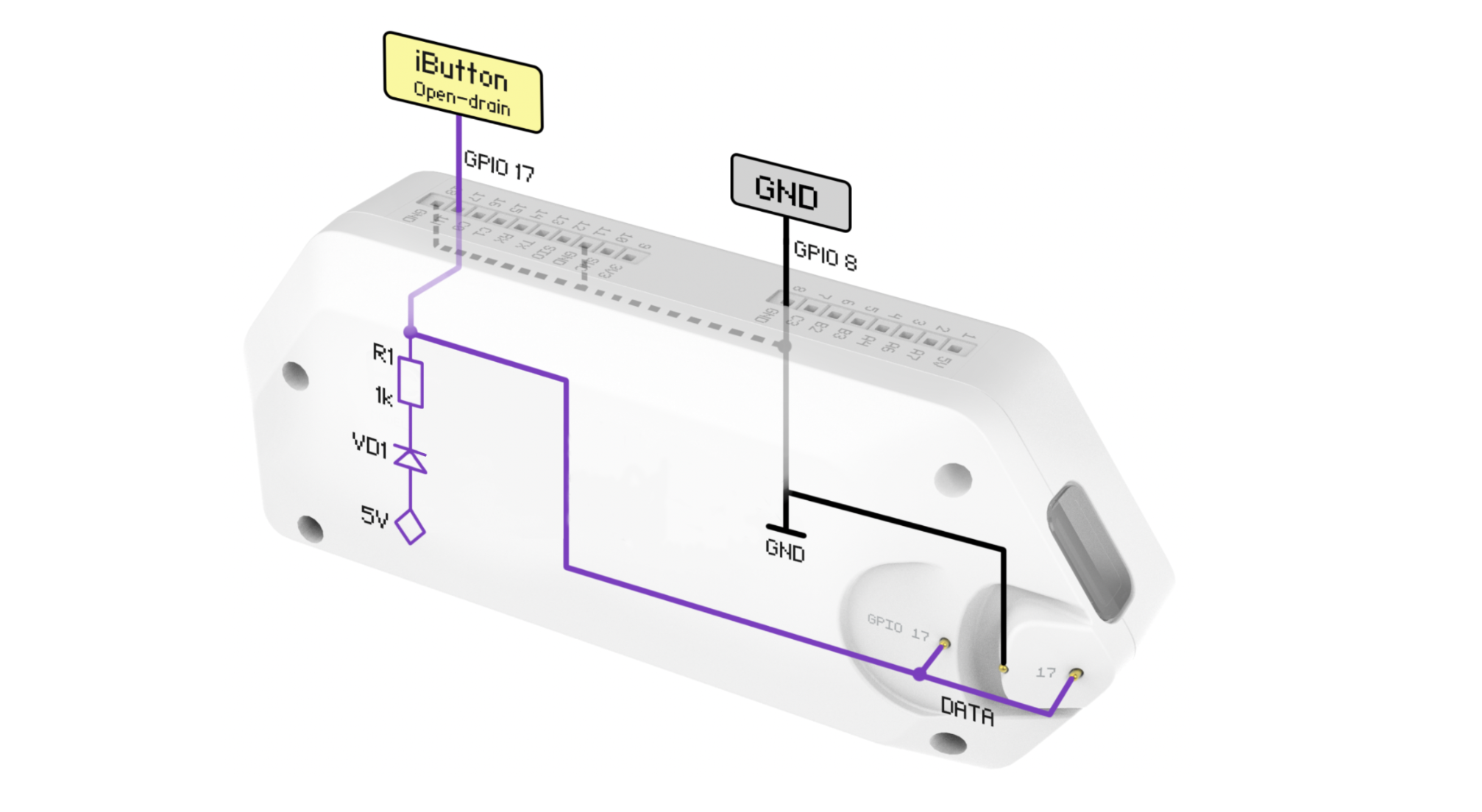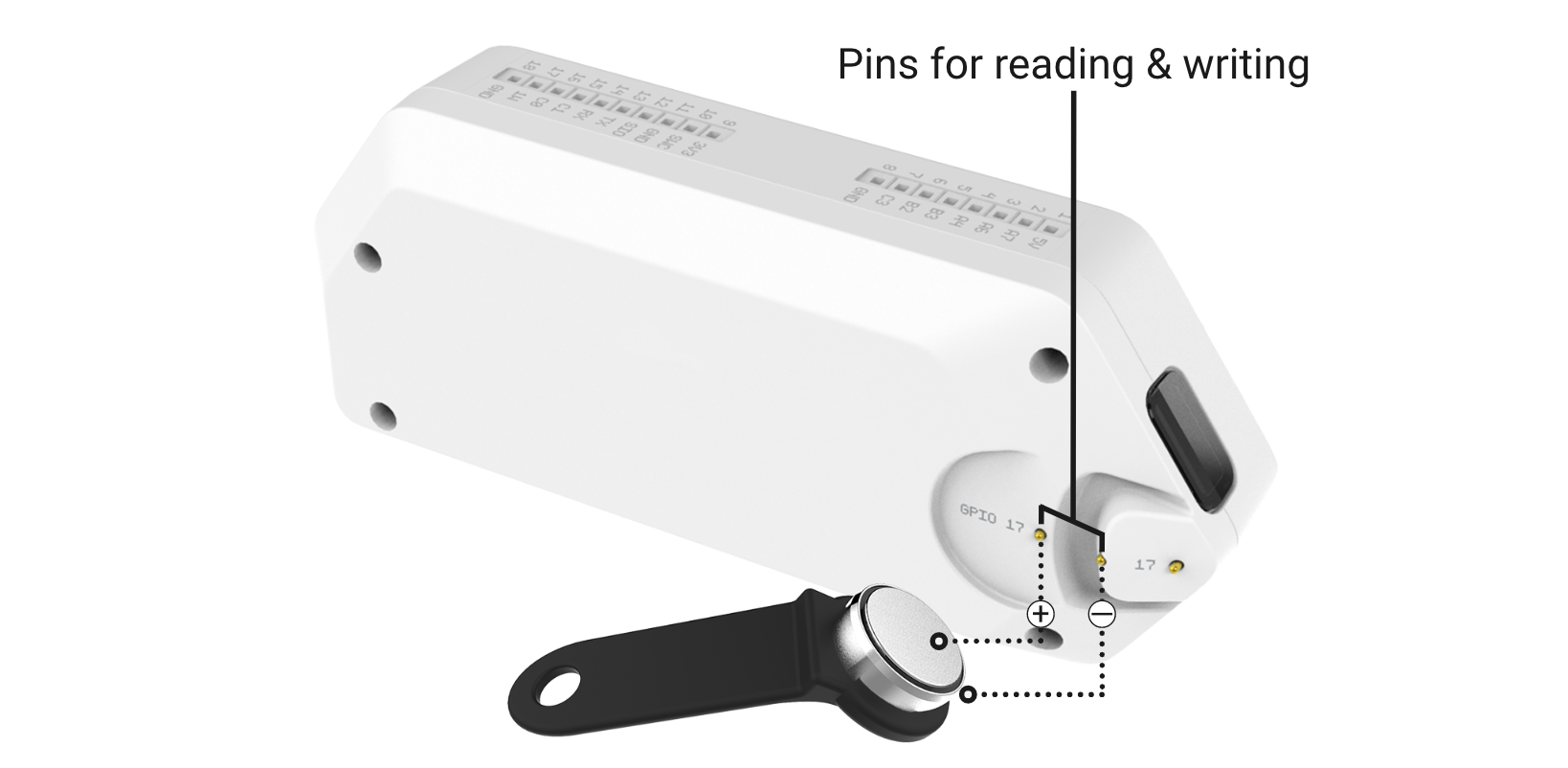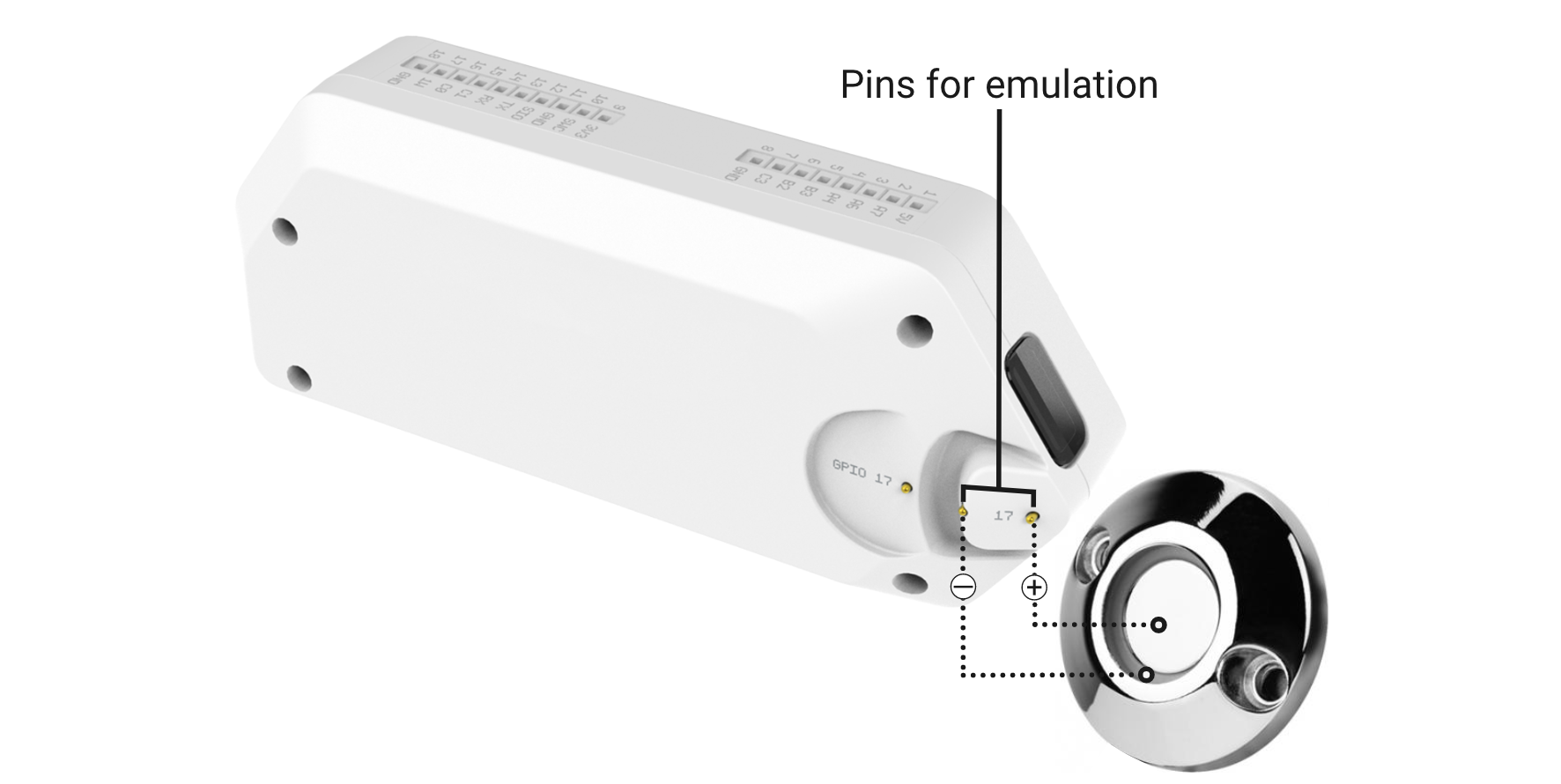iButton

Flipper Zero supports a 1-Wire device communication protocol, which is implemented in small electronic keys known as iButton keys. These keys are used for access control, temperature measurements, humidity measurements, storing cryptographic keys, etc.
Flipper Zero can read, write, and emulate iButton access control keys with its built-in iButton module, which supports Dallas, Cyfral, and Metakom key protocols.
On this page, you'll find an overview of the iButton application and learn more about the hardware behind the iButton module.
You can access the iButton application from the Main Menu. In the application, you can read, save, edit, write, and emulate iButton keys.

- Read: detects key's type, reads and saves key's unique number.
- Saved: emulates, edits, and writes saved keys.
- Add manually: generates keys with unique numbers that can be emulated.
Flipper Zero has a built-in iButton module consisting of an iButton pad and three spring-loaded pogo pins that are located on the iButton PCB.

Two pins are assigned to data transfer and have output to the GPIO pin 17. The remaining middle pin is ground.

The flat part of the pad allows connecting an iButton key (Slave) with Flipper Zero (Master). The left data pin and the middle ground pin are used for reading and writing iButton keys.

The protruding part of the pad allows connecting Flipper Zero (Slave) with an iButton reader (Master). The right data pin and the middle ground pin are used for emulation of iButton keys.



